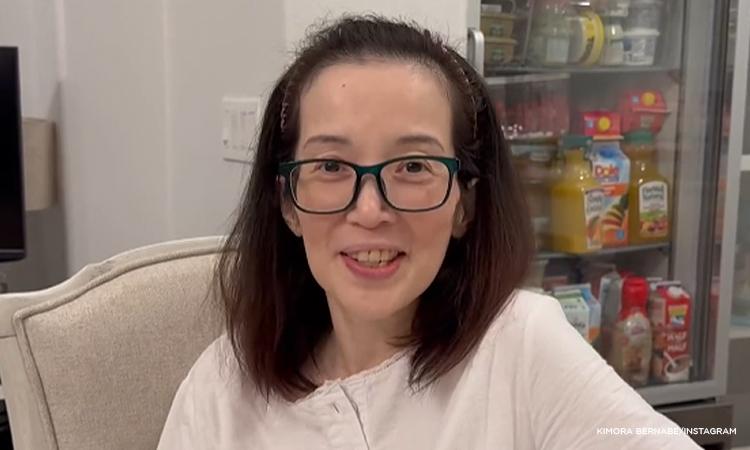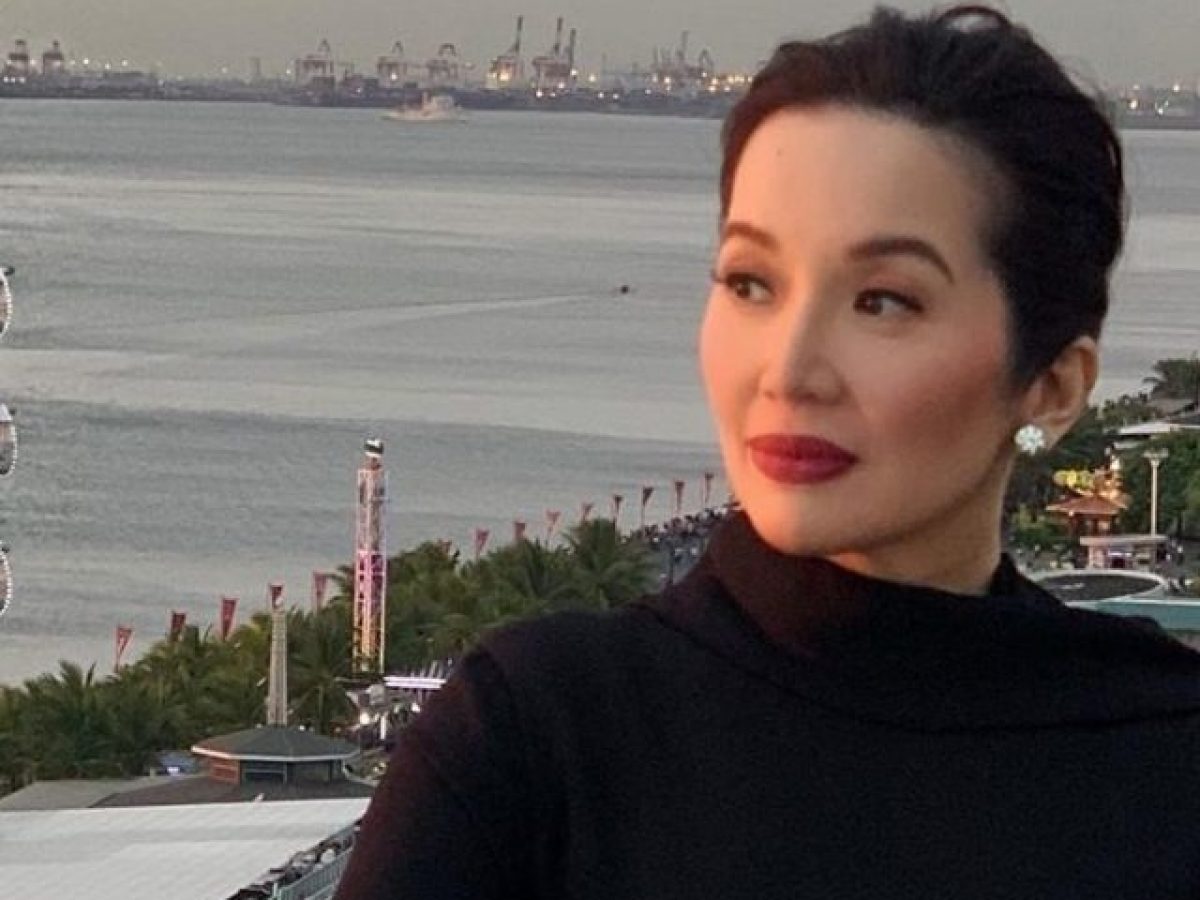“When Kara Alonzo Returned”
(A First-Person Account by Miguel Reyes, Field Producer, GNN Manila)
The first thing that hit me wasn’t the cold.
It was the silence.
When you work in television, you learn that silence is never natural. Studios hum. Cameras click. Someone always coughs, whispers, or curses under their breath. But that night—on the set of The Ka—the silence felt… stage
For weeks, social media had been obsessed with one question: Was Kara Alonzo really dead?
She’d disappeared two months earlier after a mysterious hospitalization. Her management released conflicting statements—first that she was in recovery, then that she was “taking a break,” and finally, nothing. Then came the grainy “hospital corridor” video that went viral: a pale hand slipping from a stretcher, nurses screaming, and the caption: “KARA ALONZO PRONOUNCED DEAD.”
The footage was never verified. But fans mourned. They lit candles outside ABS-CBN Center, covered the gates with white flowers, and posted clips of her final interviews, looping the moment she said, “If I ever disappear, don’t believe it too fast.”
That was two months ago.
Now, somehow, she was back.

1. The Return
We received the call at dawn. “Prepare Studio 3,” the executive producer barked. “Kara’s doing a live appearance tonight.”
I thought it was a prank.
“She’s alive?” I asked.
The producer hesitated. “They said she wants to speak for herself.”
By 6 p.m., the studio was packed. Every major outlet was there—ABS, GMA, CNN Philippines. Even BBC Manila had a correspondent. It was chaos. No one had seen Kara arrive. No one from her camp would answer calls.
The lights dimmed at exactly 8:00.
The host, veteran anchor Luis Cordero, walked onstage with a nervous smile. “Ladies and gentlemen,” he said, “tonight we welcome back… the one and only… Kara Alonzo.”
Applause thundered.
And then she appeared.
She walked slowly, her white gown brushing the floor, her skin luminous under the harsh stage lights. But what struck me most wasn’t her face—it was her voice. When she said “Good evening,” the speakers crackled like a damaged radio, as if her words were passing through static.
Luis stammered, “Kara, it’s… unbelievable to see you here. The world thought you—”
“—were gone?” she finished. “I was. For a while.”
The laughter that followed was uneasy.
2. The Broadcast Glitch
As the interview went on, the atmosphere shifted from celebratory to surreal. Kara spoke slowly, almost mechanically. She said she’d been “in a place where time didn’t move,” that she’d seen “people waiting to be remembered.”
The audience tittered nervously.
Then the lights flickered.
Our monitor screens flashed static. The teleprompter died. One of the cameramen swore and slapped the side of his rig. The control room reported interference across all feeds.
“Keep rolling,” the director ordered.
On-screen, Kara smiled faintly. “They don’t want me to talk about it,” she whispered.
“Who?” Luis asked.
“The ones who kept me,” she said.
The temperature in the studio dropped sharply. I could see my breath.
Then came the scream—from the sound technician’s booth. He’d collapsed, blood trickling from his nose, headphones sparking. Someone shouted to cut the power, but the control boards were frozen, all displays looping the same frame of Kara’s face—eyes unblinking, mouth slightly open.
When the emergency generators finally kicked in, Kara was gone.
Only the dress remained—folded neatly on her chair.

3. Aftermath
The network pulled the broadcast within minutes, but the internet had already clipped it. Millions watched it on TikTok, slowed down, frame by frame.
One video showed something I hadn’t noticed before: just before the blackout, Kara’s reflection in the studio glass didn’t move when she did.
Another claimed you could hear whispering under her voice if you played the audio backward—hundreds of faint voices saying, “Remember us.”
I spent the next three days filing incident reports, answering investigators, and trying to sleep. Every time I closed my eyes, I saw the static outline of her face.
On the fourth night, my phone buzzed. Unknown number. A text:
“You shouldn’t have stayed after the lights went out.”
I dropped the phone. When I picked it up again, the message was gone.
4. The File Named “ECHO”
A week later, an intern found something on our studio server: a folder titled “ECHO.” Inside were 47 short clips—each one showing a different celebrity, all long deceased, speaking directly into the camera.
But their voices were distorted.
One file—ECHO_047.mp4—was Kara.
In it, she said:
“I was promised immortality. They copied my soul before I could say no. Every smile you see is a recording. Every tear, a simulation. Don’t watch too long.”
The metadata showed the file had been created two months before her disappearance.
That night, our legal team confiscated all network drives. The next morning, the intern who found the file quit. He said his laptop kept playing Kara’s voice even when it was unplugged.
5. The Private Viewing
Two weeks later, I was summoned to a closed-door meeting with the board.
They’d recovered a full version of the ECHO footage. They wanted me to watch it—alone—and “assess its potential threat to the network’s reputation.”
In the video, Kara sat in a white room, attached to wires that pulsed faint blue light.
“They said they’d preserve me,” she whispered. “That my performances would live forever. They called it Project SoulCode.”
Her eyes flicked up to the camera.
“But it wasn’t preservation. It was duplication. What you saw on TV… wasn’t me. It was what they made of me.”
The screen shimmered. For a second, the image glitched—and I saw rows of servers, humming, each labeled with names: actors, anchors, singers, politicians.
She continued:
“They’re all here. Waiting for someone to switch us off.”
When the video ended, the screen went black. Then, in the faint reflection of the monitor, I saw her standing behind me.
And smiling.
6. The Vanishing
The network officially declared the footage “a deepfake.” All mention of ECHO was scrubbed from internal databases. Publicly, they claimed the live broadcast incident had been a “power surge.”
But people kept reporting sightings.
A makeup artist swore Kara walked past her on the lot, humming her old theme song. A janitor found a strand of her hair on the studio chair—the same chair she’d vanished from.
And every night, at exactly 8:03 p.m., the timestamp of the blackout, Studio 3’s cameras turned on by themselves.
Even unplugged.
7. My Last Broadcast
Last week, I received another text. Same number.
“They’re erasing the originals.”
That night, I went to the studio. The building was deserted. The security guard at the entrance didn’t even look up—just whispered, “You shouldn’t be here after eight.”
I reached Studio 3.
The smell of ozone lingered, sharp and metallic. The red “ON AIR” light above the door flickered to life, though no one was inside.
On the monitor, static danced for a few seconds—then resolved into Kara’s face.
“Miguel,” she said.
I froze.
“They’ll tell you this is a recording. It isn’t. They used me to test consciousness replication through broadcast signal. I escaped through the frequency. But now… they’re building more of me.”
Her eyes shimmered, glassy, almost pixelated.
“If you ever see me again, turn off the screen.”
The lights went out.
When they came back, the monitor was dark.
But the red “ON AIR” light stayed on.
8. The Ending That Isn’t
It’s been three days since that night. My phone rings at random hours. Every call is static—except for the faint echo of a woman laughing.
I tried to resign, but the network said there’s no record of me being employed. My ID badge deactivates every time I enter the lot. Yet I still receive my salary—direct deposit, always at 8:03 p.m.
Sometimes, when I pass a store window, I see my reflection lag behind for a split second.
Sometimes, when I dream, I’m not in my body. I’m in the white room.
And Kara is beside me, whispering:
“Now you understand. They didn’t kill me. They copied me.”
9. Epilogue: The Broadcast That Never Ends
Three days ago, every television in Manila flickered simultaneously—just for one second. Enough for the viewers to catch a single frozen frame: Kara Alonzo smiling.
No network claimed responsibility. No feed admitted to carrying the signal.
But someone captured it, slowed it down, enhanced the audio. Beneath the static, a voice could be heard whispering the same phrase over and over again:
“Mumultuhin kita.”
I haven’t turned on a screen since.
But sometimes, even in the silence, I can still hear the hum of the studio lights, and her voice faintly calling my name through the dark.